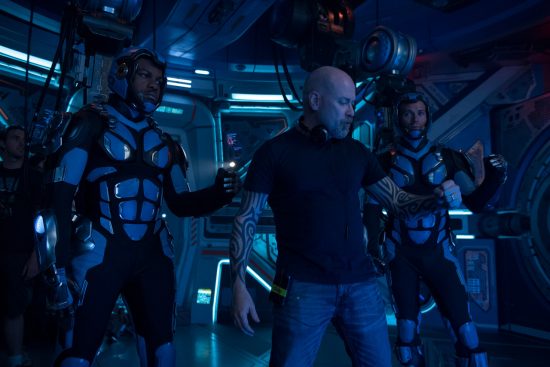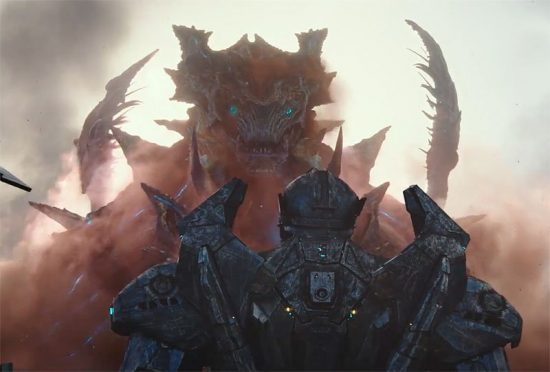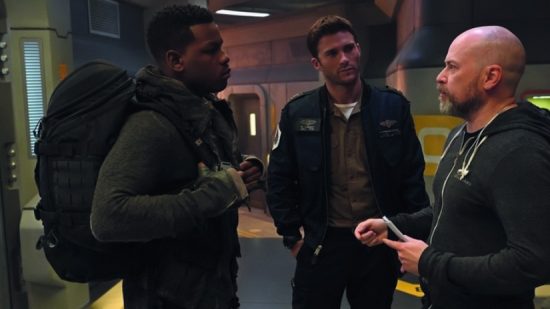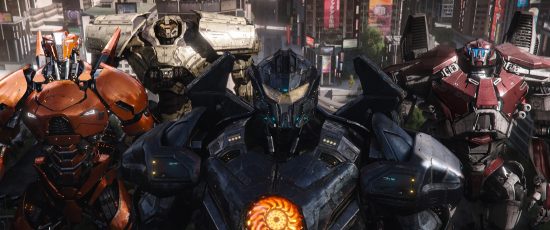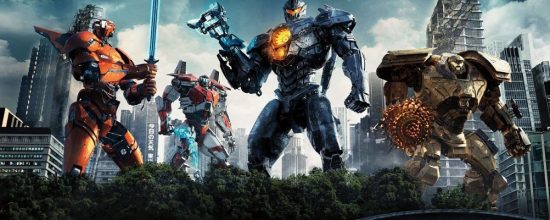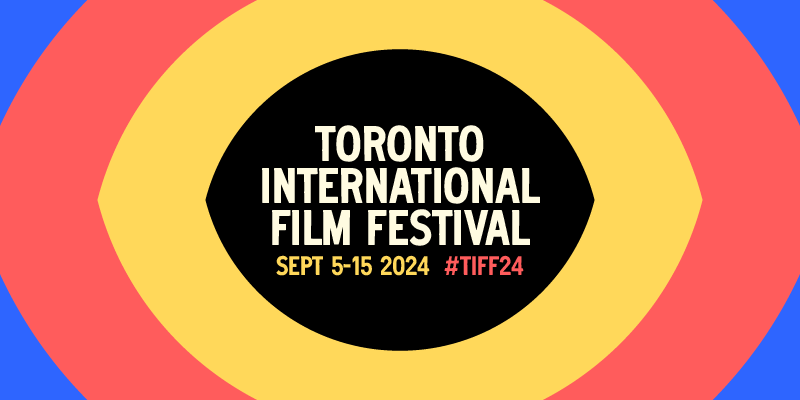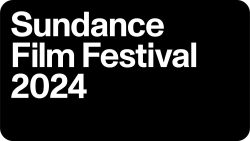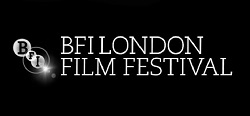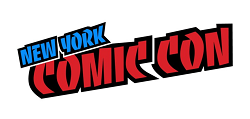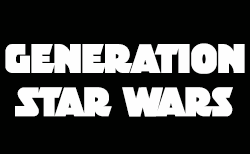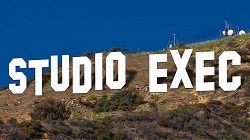Director Steven S. DeKnight talks about Pacific Rim: Uprising
Steven S. DeKnight is an American screenwriter, television producer, and director. He is best known for being the creator, head writer, and executive producer of the Starz series Spartacus, including Spartacus: Blood and Sand, Spartacus: Gods of the Arena, Spartacus: Vengeance and Spartacus: War of the Damned. DeKnight previously worked on Smallville, Buffy the Vampire Slayer, and Angel. He also served as a consulting producer on Joss Whedon’s television series Dollhouse. He makes his feature debut as a director with the science fiction sequel Pacific Rim: Uprising, (read our review) which pitches giant monsters, Kaiju, against human-piloted robots called Jaegers…
What were the design thoughts behind your Kaiju?
I grew up loving monster movies so to get a chance to design my own monsters was so cool. I wanted to take what Guillermo Del Toro had done with the Kaiju in the original movie and since it is ten years later and there hasn’t been another attack, I wanted to advance the technology of the Jaegers and the Kaiju. The aliens on the other side of the breach also had ten years to redesign their genetically designed monster weapons. So I wanted to honour what Guillermo did but also I wanted to push the visual language of the Kaiju forward as well, with the idea that they would be more intricate, more detailed, more advanced. And then we started in the writers’ room talking about how to approach it and we came up with the idea of combining three Kaiju together to form the Mega Kaiju.
That must have made it even more complicated?
That’s true because now we needed three creatures that stitched together to make one creature. We had a fantastic design team, the concept artists at ILM, and I wanted each of the creatures to have a special ability. They knew that Hakuja had to burrow underground and that Shrikethorn had energized spikes and that Raijin had these faceplates that closed up and absorbed energy. That’s really all we knew. And then they started doing many, many designs and the first batch of designs were a little out there. I always remembered that Guillermo had told me that it was really important that when you saw the Kaiju you had to understand what you were looking at immediately. You didn’t want anything too crazy because he showed me some early concept designs for his movie and he said the problem was that when you looked at them you didn’t quite know what you were looking. An executive gave him some great advice which was, ‘What’s the toy? Do you want to play with it?’ And loving monsters as a kid I really took that to heart.
Which Kaiju did you settle on first?
Hakuja ended up being the first one that really came together and then Shrikethorn, and then we really wrestled with Raijin. There were a lot of different concepts and nothing was working and then they finally hit it with that last design. It was just elegant and simple. I remember when I first saw that design I loved it that when Raijin’s plates opened, it looked like some sort of devil head inside, which I thought was really interesting. And then Mega Kaiju perplexed us right until the very end. We had finished shooting. We were deep in the post-production process with the visual effects before we came up with the final design for Mega Kaiju. It was one of those things that when you see it, you know it and when they showed me, I was like, ‘Yes! Finally!’
Before this film you were mostly directing TV. Was it difficult to step up to this scale?
It was terrifying. For my first feature not only did I take on a massive, huge, complicated visual effects franchise, I also stepped into the enormous shoes of Guillermo Del Toro, a man I had admired from afar for many, many years. He has been an inspiration. He is like the Leonardo De Vinci of movies. He is so talented with his notebooks, his drawings and his visual eye. So it was very, very daunting and the thing that really gave me the courage was that first meeting with Guillermo when I pitched him the story and he really liked it. He gave me some great suggestions and the most important thing he said was, ‘Look, I am going off to do my own little passion project,’ which turned out to be The Shape of Water, ‘but while I will help you as much as I can, I also I don’t want to be in your hair, and I don’t want you to be looking over your shoulder.’ He said, ‘I want you to go and make your Pacific Rim movie. Don’t try to make my Pacific Rim movie.’ And that really gave me the courage to take what he did and to try and make it my own.
Where do you find the most fun, in the visual effects, directing the actors?
For me, it was when we were working on the concept art. I am a huge fan of concept art. I remember the first time I saw Ralph McQuarrie’s concept art for Star Wars. It was so inspiring. Every day when we were doing pre-production, I would walk in and we had a room called the war room where we put up all the art. And every day was like Christmas. I was running in there to see what the guys at ILM and what our storyboard artists had come up with. That was joyously fun. And then once we started making the movie, people might think the big action scenes were the most fun. But shooting an action scene is a very tedious, time-consuming, difficult prospect where there are so many pieces and so many things that have to fit together. I love watching it when it is done but shooting them is very, very difficult. For me, the most fun on set is when we have two actors together, like John Boyega and Cailee Spaeny when they are in the jail cell and we were improvising a lot of their arguments. And then Charlie Day and Burn Gorman had their reactions together. Every day on set with them was just a joy. And then when we got to the post process, which is very gruelling on a movie like this, one of my biggest joys was going in to review the visual effects each day and seeing them all come alive and seeing it look a thousand times better than I had ever imagined. I am a huge fan of visual effects movies, all the way back to the Willis O’Brien model for King Kong or one of my favourites, Ray Harryhausen’s Jason and the Argonauts. That skeleton fight still to this day is I think unmatched. But to see something that I had worked on suddenly go up on the big screen with the technology we have today, it was amazing. I felt like a little kid again.
How different was the first version of this film compared to the final version with the reshoots?
A movie like this goes through so many transformations. You start in one direction and you start building it and when you start to add cast and other elements, things start to shift and change. It is a living, breathing animal. So when we finished the movie and looked at it there was a little bit here and a little bit there where we thought we could use a little bit more humanity and humour. Throughout the whole process we were always looking for a moment to lighten the mood or to get a deep connection between the characters. So we picked up just a little bit here and there. Once I’d looked at the movie and the characters played by John Boyega and Scott Eastwood, it felt like they were just attacking each other and you didn’t feel their friendship or their past connection. So we picked up that scene in the kitchen between the two. For me, it was such a small thing and it was just one day of shooting but it was pivotal to the movie because suddenly you liked them both more. You understood the relationship. It was amazing how one scene can completely transform an entire movie. That scene put a different kind of spin on who they were and it really informed the audience about their relationship. That’s all we changed really.
At the end of the movie there’s a set up for another sequel, so are there plans for the next film already?
There are always plans. When I was working on Uprising I was constantly taking notes about the next movie and that’s the TV blood in me. When you work on episodic television you always have an eye on two or three or four episodes down the line. So I wanted to make sure that we were building a story that supports another episode in the franchise. I have a general blue print of what the next movie might be and I hope we get a chance to make it because I think it’s going to be even more fun and exciting than this sequel.
Would you want to direct it?
I would love to direct it. I am contracted to direct the next movie, though it is all based on schedules. I am also doing some more work in television. So if everything aligns and works out I would love it. I loved the cast and I loved working with these people so much. It was a real joy from start to finish.
And you would get to create a whole new world for the Kaiju?
Yes. That would be awesome.
Do you have a favourite Jaeger?
It is like choosing a favourite child. I would just go back to the concept art. We went through many, many iterations of all the Jaegers to try to get them just right but I remember I walked into the war room one day and new concept art from ILM was up. And there was a concept art for Sabre Athena which looks almost exactly like what you see on screen. Somebody out there had this idea for that robot, for that Jaeger that just nailed it on the first try. And I loved it because it had such an Asian influence, such an anime influence. It looked sleek, different and cool. So that has always been my favourite. It just struck the right chord from the start.
You were directing Angel and working on Dollhouse. Are you good friends with Joss Whedon?
A: Yes, Joss gave me my biggest break when he invited me to come on board with Buffy. And my days spent on Buffy the Vampire Slayer, Angel, Dollhouse were really the most important for me to develop as a writer first and foremost, and as a producer. Joss also gave me the first chance to direct. He let me direct an episode of Angel. He had heard that I was interested in directing and he was always very supportive of his writers learning all aspects of the business. I was on Buffy at the time. He was about to do Firefly and he wanted to bring one of the Angel writers onto Firefly which left a hole in Angel. He asked if I would be willing to leave Buffy and go to Angel and I’d get a promotion and could direct an episode. I said, ‘Yes!’ I loved Angel so it was a no brainer. I will never forget that first day on the set of Angel. I had never directed anything, not a high school play, nothing. So I didn’t know what the hell I was doing but somehow I bumbled through it and it was scary and exciting and exhilarating and I got a real taste for it. Over the years I would do an episode here and an episode there and then finally I turned my attention back to my first love which was features. I was originally going to do this very small thriller with three people in a house that I had written, very Hitchcocky and a real throwback, with almost no special effects. It was just all suspense.
That’s quite a long way from Pacific Rim Uprising…
Literally, this could not be further from what I had planned for my first movie. But I planned my first movie to be a small self-contained thing so that people could see I could do a movie. And then I’d do a medium sized movie, probably a couple, and then one day hopefully I could trick somebody into giving me a big franchise. Instead, everything worked out that my first time out ended up being this gigantic, very complicated movie.
Do you still want to do that small picture?
I am still hoping to do it later this year or early next year as a kind of palette cleanser before I go off and do something else gigantic and complicated.
Pacific Rim Uprising arrives on Digital on July 16, 2018, as well as on 4K Ultra HD, 3D Blu-rayTM, Blu-rayTM, DVD, Steelbook and On Demand on July 30, 2018 from Universal Pictures Home Entertainment.
[amazon_link asins=’B07BF7BNN2,B00A6UHC0U,B074G3V218,B000AAF9QU’ template=’ProductCarousel’ store=’tasspa-21′ marketplace=’UK’ link_id=’9b26defc-8b3a-11e8-86ce-c13b5ac97990′]

